MANUAL UPDATE-SEC.8A DIAGNOSIS OF SECONDARY COOLANT FAN

SERVICE MANUAL UPDATE
Please add the following pages to section 8A, additional information for diagnosis of secondary coolant fan, pages 31-8 through 31-16 to your copy of the 1989 Pontiac Grand Prix Service Manual.
Component
A/C Intermediate Pressure Switch (VIN R) A/C Intermediate Pressure Switch (VIN W) (VIN T) Coolant Fan Coolant Temperature Sensor (VIN R) Coolant Temperature Sensor (VIN W) (VIN T) Electronic Control Module (ECM) Primary Coolant Fan RS Electrical Center Secondary Coolant Fan C102B (10 cavities) G101 (VIN R) G101 (VIN W)(VIN T) G102 (VIN R) G102 (VIN W) G103 (VIN R) G103 (VIN W) (VIN T) S104 S105 S106 S114 S121 S122 S128
Location
LH front of engine, near transaxle studs 201-4-A LH front of engine compartment, on accumulator 201-1-A Engine compartment, behind LH side of radiator 201-4-A Top LH side of engine, below coolant outlet 201-5-A Top LH rear of engine, below coolant outlet Engine compartment front of RH strut tower 201-8-C Engine compartment, behind LH side of radiator Engine compartment, front of RH strut tower 201-8-C Engine compartment, behind RH side of radiator RH front of engine compartment, below RS Electrical Center 201-8-C Lower front of engine, near starter 201-5-D Rear of engine, below exhaust manifold 201-4-C RH side of engine 201-3-A Rear of engine below exhaust manifold 201-4-C LH front of engine, on transaxle stud 201-4-A On engine stud, front of transaxle assembly 201-1-A Engine harness, RH rear of engine 201-3-A Engine harness, bottom center of radiator support 201-0-A Engine harness, RH front of engine co mpartment 201-0-A Engine harness, below RS Electrical Center 201-0-A Engine harness, top LH rear of engine Engine harness, near RH frame rail 201-0-A Engine harness, bottom RH rear of engine 201-4-C
TROUBLESHOOTING HINTS
Try the following checks before doing the System Diagnosis.
1. If both Coolant Fans do not operate, check IGN Fuse.
2. If a Coolant Fan does not operate, check Fusible Links E and G.
3. If a Coolant Fan runs with the Ignition Switch in OFF, replace the suspect Coolant Fan Relay.
Go to System Diagnosis for diagnostic tests.
SYSTEM DIAGNOSIS
Diagnostic stops for the symptoms listed in the following table are listed after the table.
If any diagnostic codes are present refer to Section 6E3.
SYMPTOM TABLE
A: Niether Coolant Fan runs B: Primary Coolant Fan does not run C: Secondary Coolant Fan does not run D: Primary Coolant Fan runs continuously with Engine coolant cool and A/C mode selector off E: Secondary Coolant Fan runs continuously with Engine coolant cool and A/C mode selector off
Circuit Operation
Each coolant fan is turned on and off by a separate coolant fan relay.
The primary coolant fan relay coil is grounded through the ECM when vehicle speed is less than a speed determined by the ECM and the engine coolant reaches 108 DEG C (227 DEG F) with A/C off, and 106 Deg C (223 DEG F) with A/C on. The contacts close and volatage is applied through the primary coolant fan. The primary coolant fan runs until the Ignition Switch is turned off, or coolant temperature decreases to 104 DEG C (220 DEG F) with A/C off or 102 DEG C(216 DEG F) with A/C on.
The secondary coolant fan relay coil is grounded through the ECM when the coolant temperature reaches 118 DEG C (245 DEG F). The contacts close and voltage is applied to the Coolant Fan. The fan then runs at high speed. The Coolant Fan will continue to run at high speed with the Ignition Switch in RUN until the coolant temperature lowers to 114 DEG C (238 DEG F).
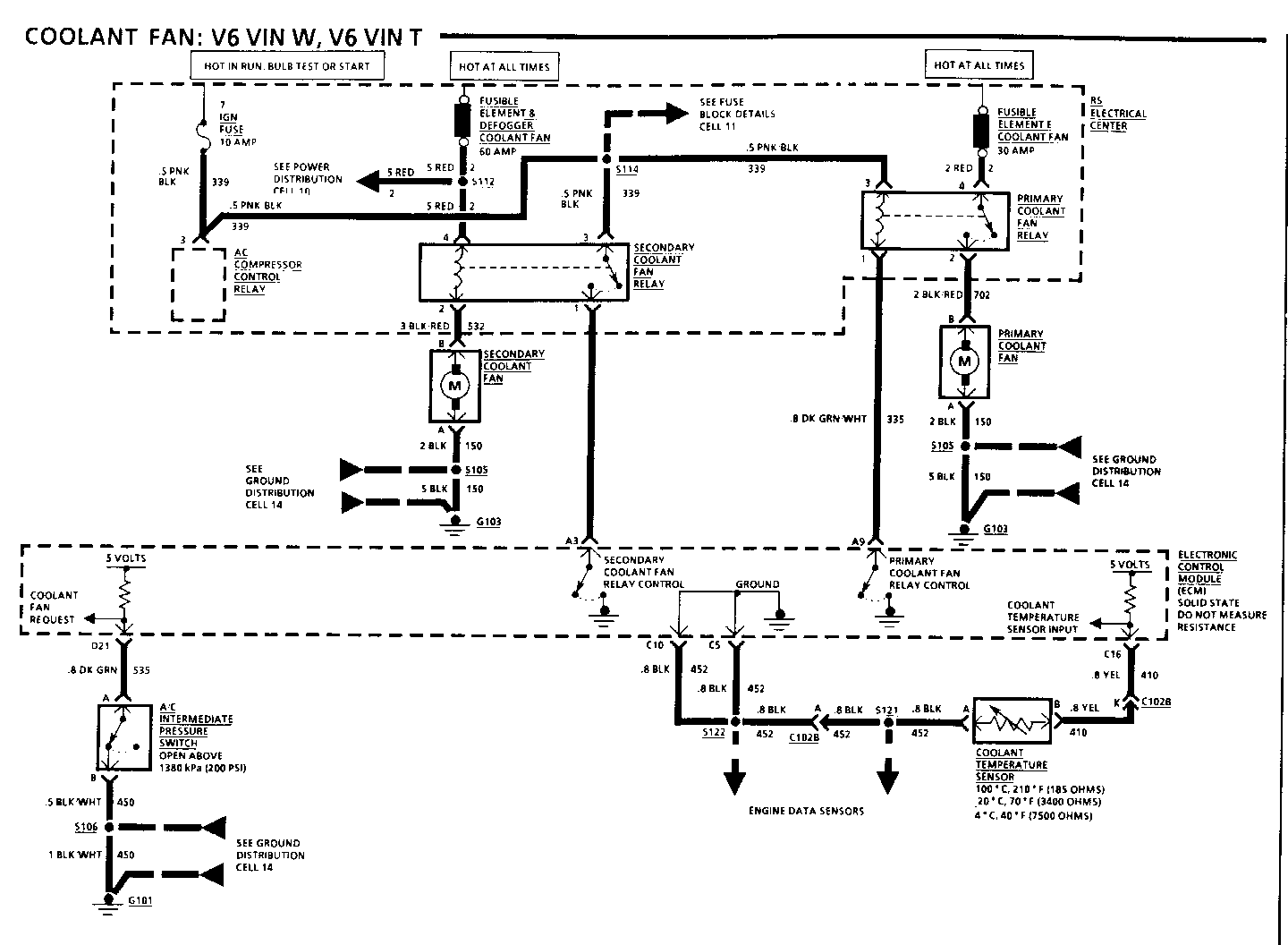
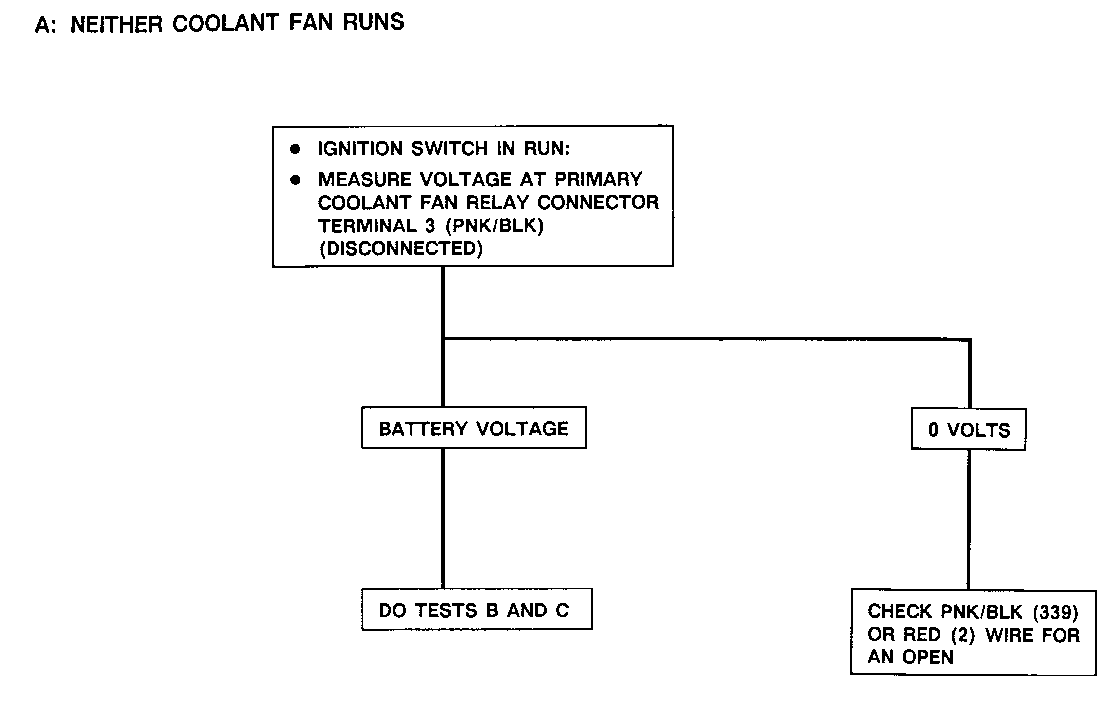
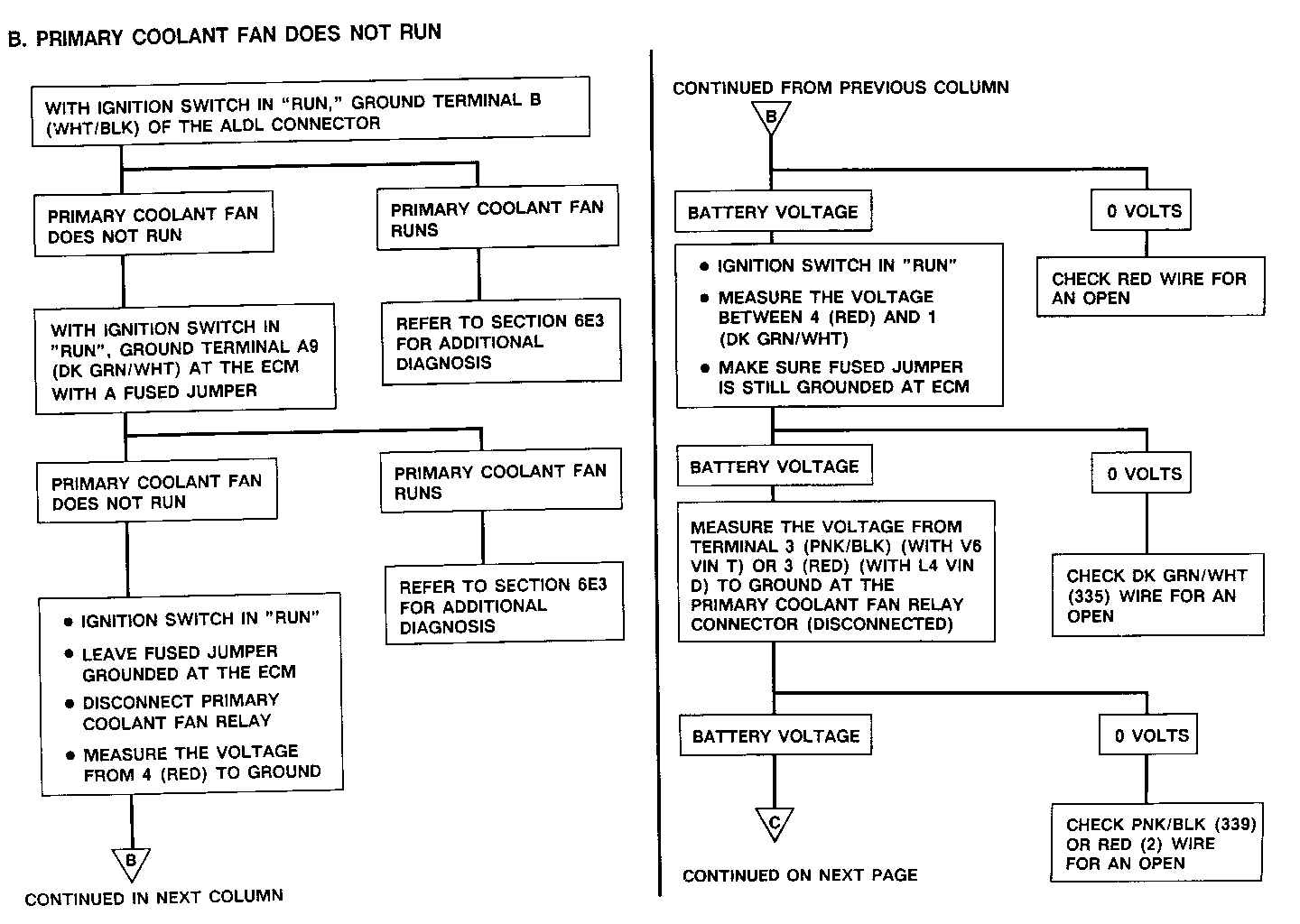
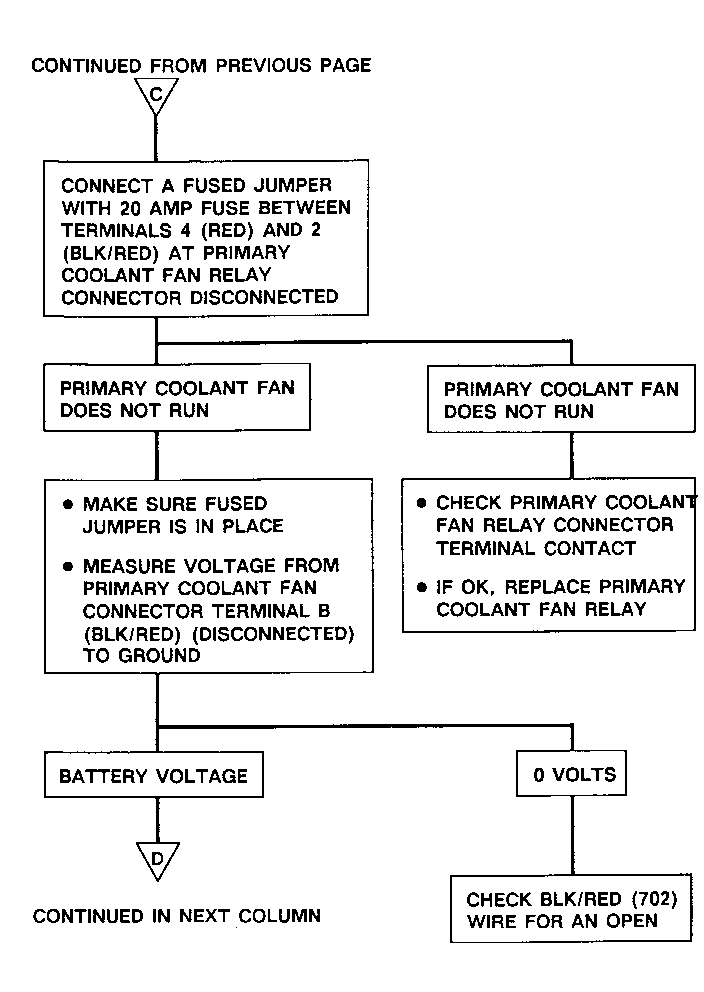
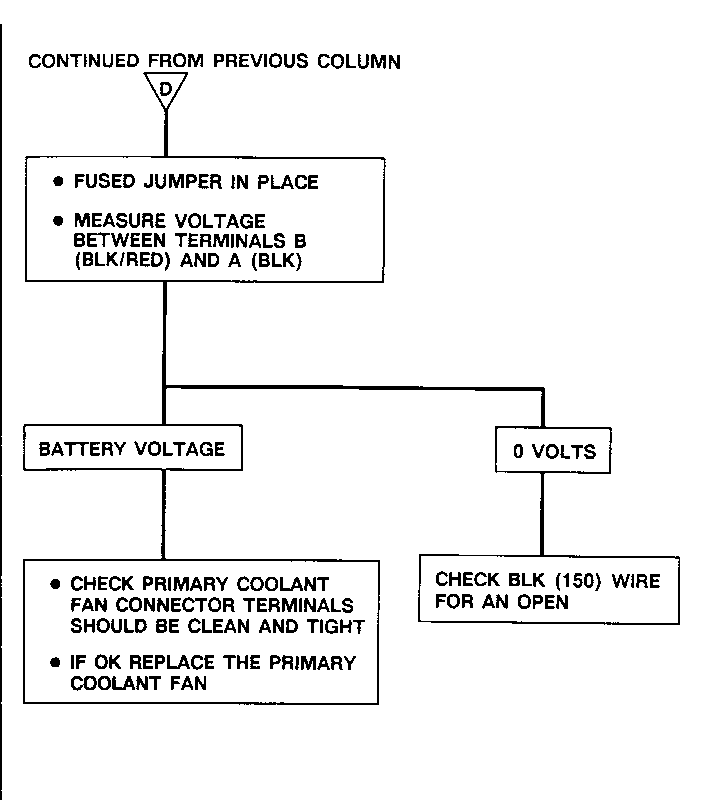
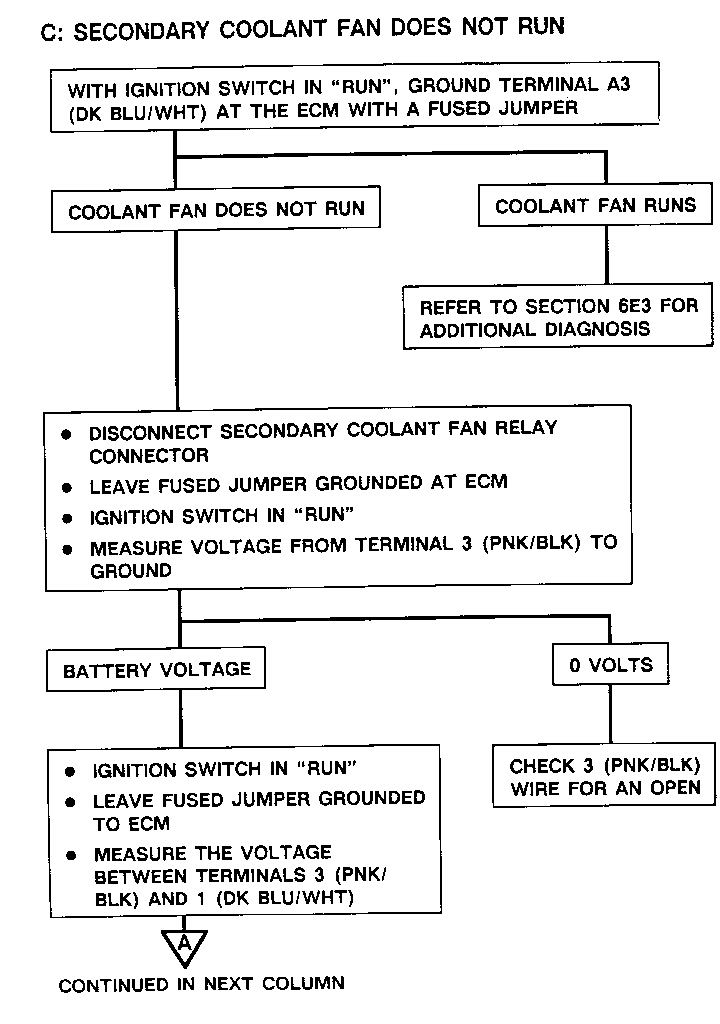
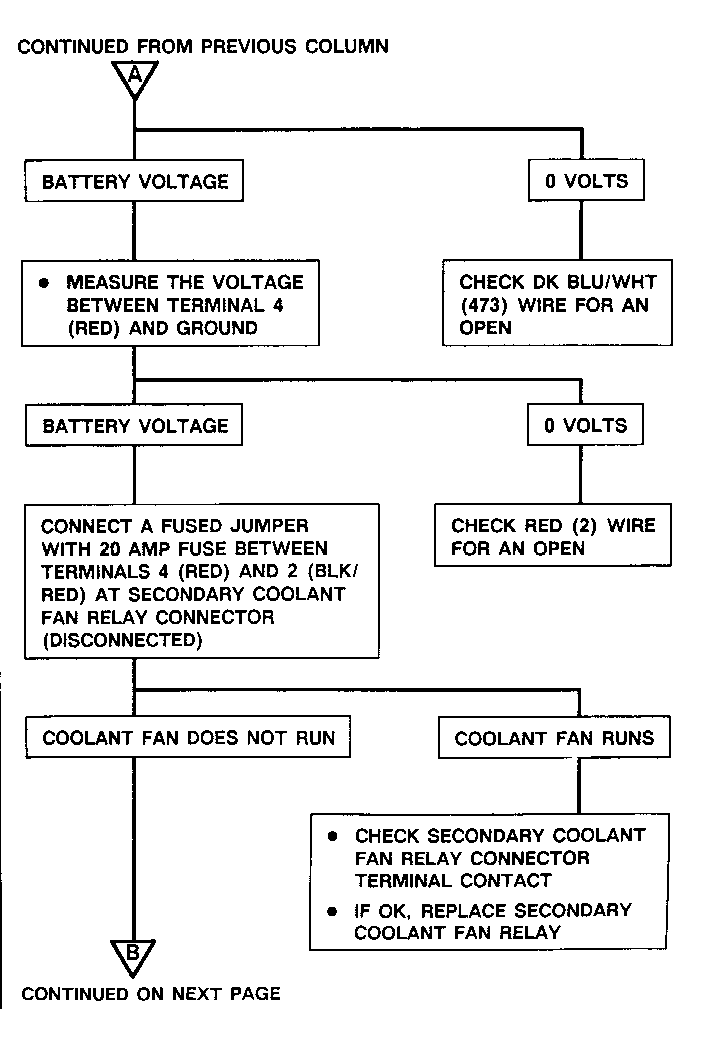
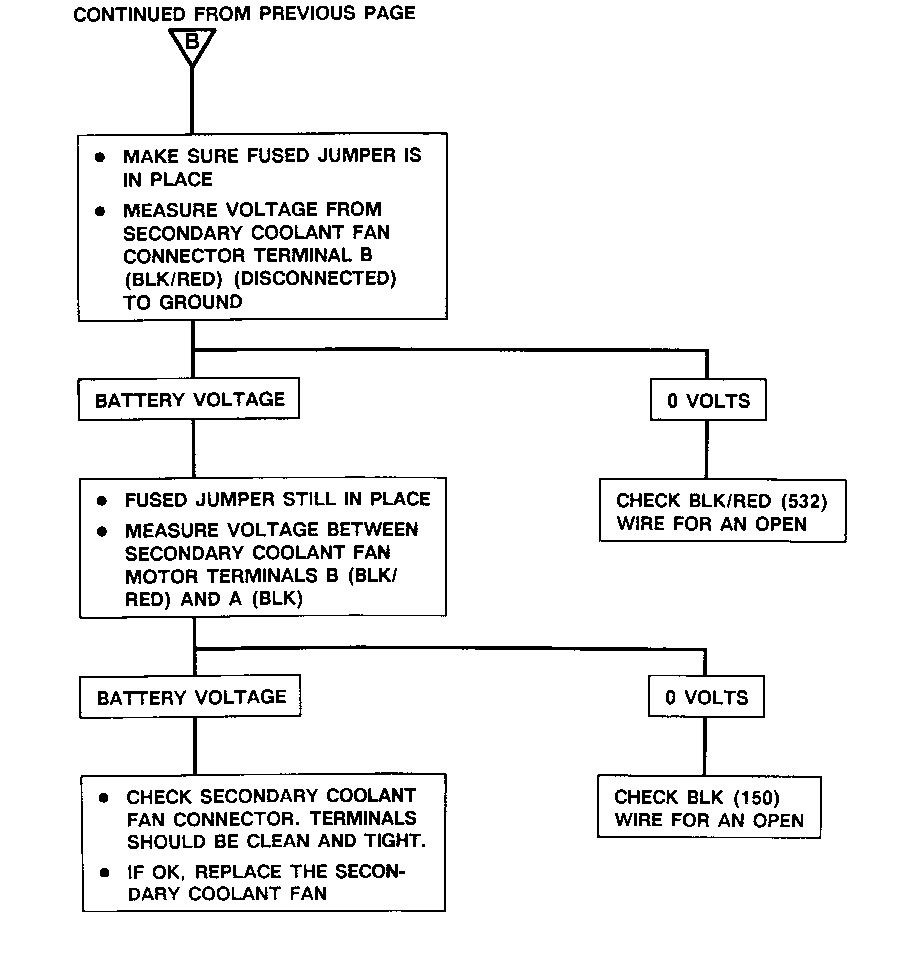
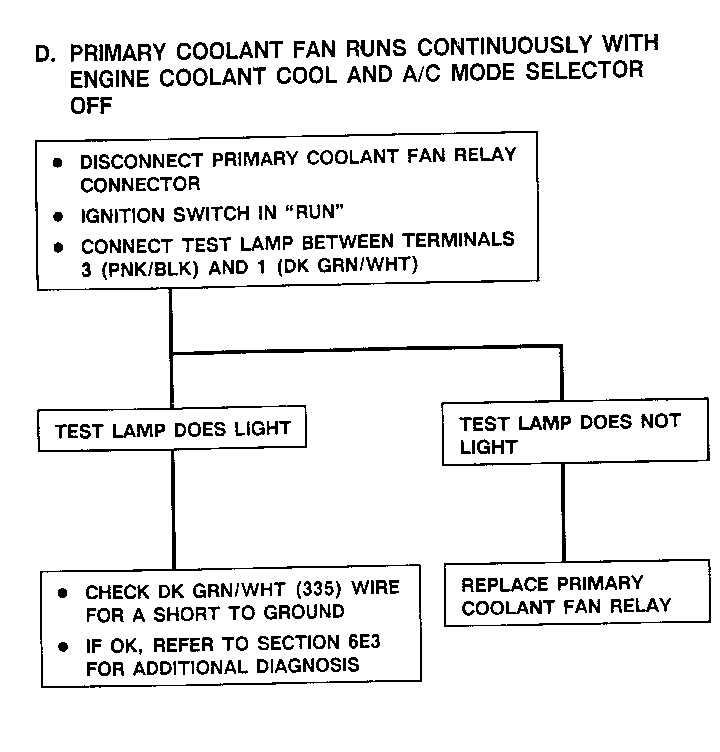
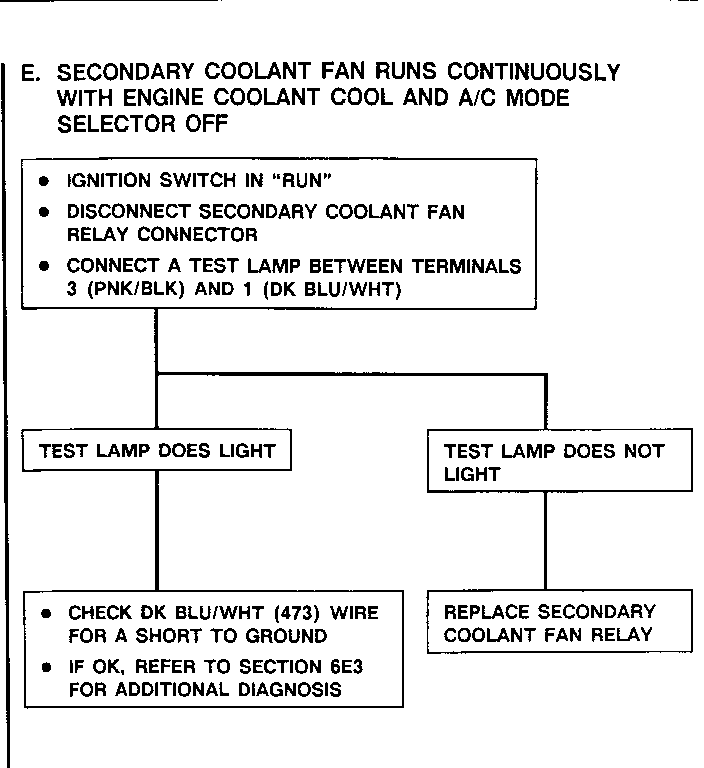
General Motors bulletins are intended for use by professional technicians, not a "do-it-yourselfer". They are written to inform those technicians of conditions that may occur on some vehicles, or to provide information that could assist in the proper service of a vehicle. Properly trained technicians have the equipment, tools, safety instructions and know-how to do a job properly and safely. If a condition is described, do not assume that the bulletin applies to your vehicle, or that your vehicle will have that condition. See a General Motors dealer servicing your brand of General Motors vehicle for information on whether your vehicle may benefit from the information.
